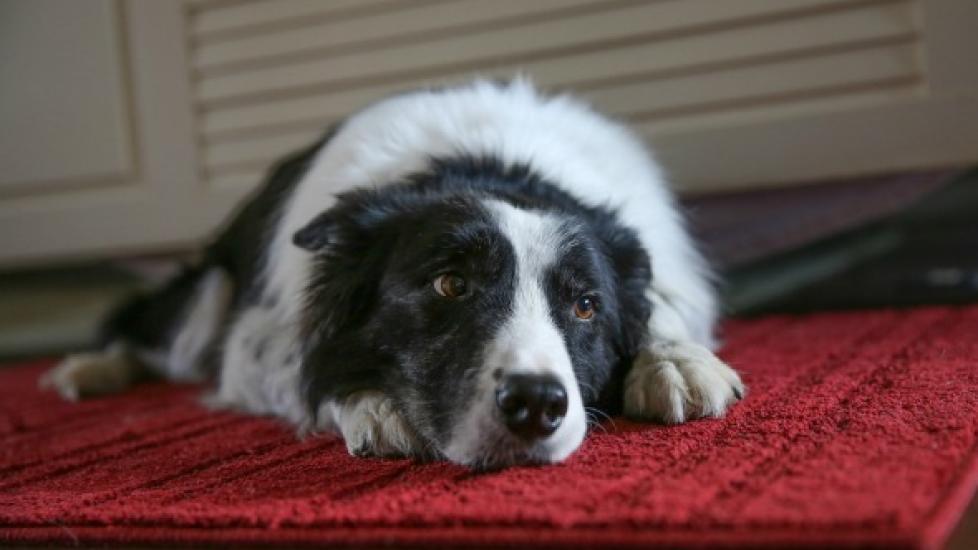Stomach Disorder (Loss of Motility) in Dogs
Gastric Motility Disorders in Dogs
The spontaneous peristaltic (involuntary, wavelike) movements of the stomach muscles are essential for proper digestion, moving food through the stomach and out into the duodenum -- the first portion of the small intestine.
Excessive gastric motility, with muscular contractions occurring too frequently, causes pain, whereas below normal motility causes delayed gastric emptying, abnormal gastric retention, gastric distention/bloating, and other related signs. Symptoms may occur at any age but it is less common in young dogs than in aging dogs.
Symptoms and Types
Clinical symptoms vary depending on the primary cause responsible for the gastric motility disorder. The following symptoms are commonly seen in affected dogs:
- Chronic vomiting of food, especially soon after taking meal
- Nausea
- Loss of appetite (anorexia)
- Belching
- Compulsive eating of non-food substances (pica)
- Weight loss
Causes
- Idiopathic (cause unknown)
- Secondary to other metabolic disorders, such as:
- Hypokalemia
- Uremia
- Hepatic encephalopathy
- Hypothyroidism
- Secondary to primary gastric disease, such as:
- Gastritis
- Gastric ulcers
- After gastric surgery
- After use of certain drugs
- In case of excessive pain, fear, or trauma
Diagnosis
A complete blood profile will be conducted, including a chemical blood profile, a complete blood count, and a urinalysis to look for the potential cause of the decreased or increased gastric motility. Dehydration, acid-base imbalances, and electrolyte imbalances are common in cases with chronic vomiting. An electrolyte profile will help in determining the extent of dehydration and other related abnormalities.
Abdominal X-rays will help in locating excess gas, fluid or food in the distended stomach. To improve visibility on X-ray and examine the movement of the stomach, barium sulfate can be used for contrast abdominal radiography. This method uses a medium, in this case barium sulfate, to bring the interior of the body into sharper focus by adding a substance to the organ or vessel that will be visible on X-ray imaging. The barium is mixed with meal and fed to the dog, and serial radiographs are then taken to determine the length of time it takes for gastric emptying.
Ultrasound is also a valuable diagnostic tool for stomach motility evaluation, and endoscopy is commonly employed for real time evaluation of the various abdominal organs, including stomach. An endoscope is a tubular device that is outfitted with a lighted camera and gathering tool. It is inserted into the body, generally by mouth, and threaded into the organ that is to be examined (e.g., bladder, stomach, etc.) so that your veterinarian can better view the internal structure of the stomach organ, discovering masses, tumors, abnormal cells, blockages, etc. The endoscope can also be used to collect a tissue sample for biopsy.
Treatment
Most dpgs do not require hospitalization for this condition; most likely, you will be able to return home with your pet after the initial treatment. In cases of severe bodily fluid loss (dehydration) or vomiting, your dog will need fluid therapy to restore fluid deficit and electrolyte imbalances. For proper management, a special diet may be advised for some patients with recurring gastric motility problems. Liquid or semi-liquid diets are often recommended to facilitate gastric emptying. Moreover, frequent small volume meals are preferred for affected dogs.
In most uncomplicated cases, dietary manipulations alone are sufficient for successful resolution of the problem. However, in some dogs, drugs to increase gastric motility may also be employed. Animals with gastric obstruction will require surgery for correction of the problem if it cannot be resolved by any other method.
Living and Management
In most dogs with uncomplicated gastric motility problems, the initial treatment results in a successful resolution of the problem. If your dog does not respond to the initial therapy, a further diagnostic workup may be required. The length of the treatment will depend on the resolution of the underlying disorder. If surgery is performed, it may take 10 to 14 days to regain normal gastric motility and function.
